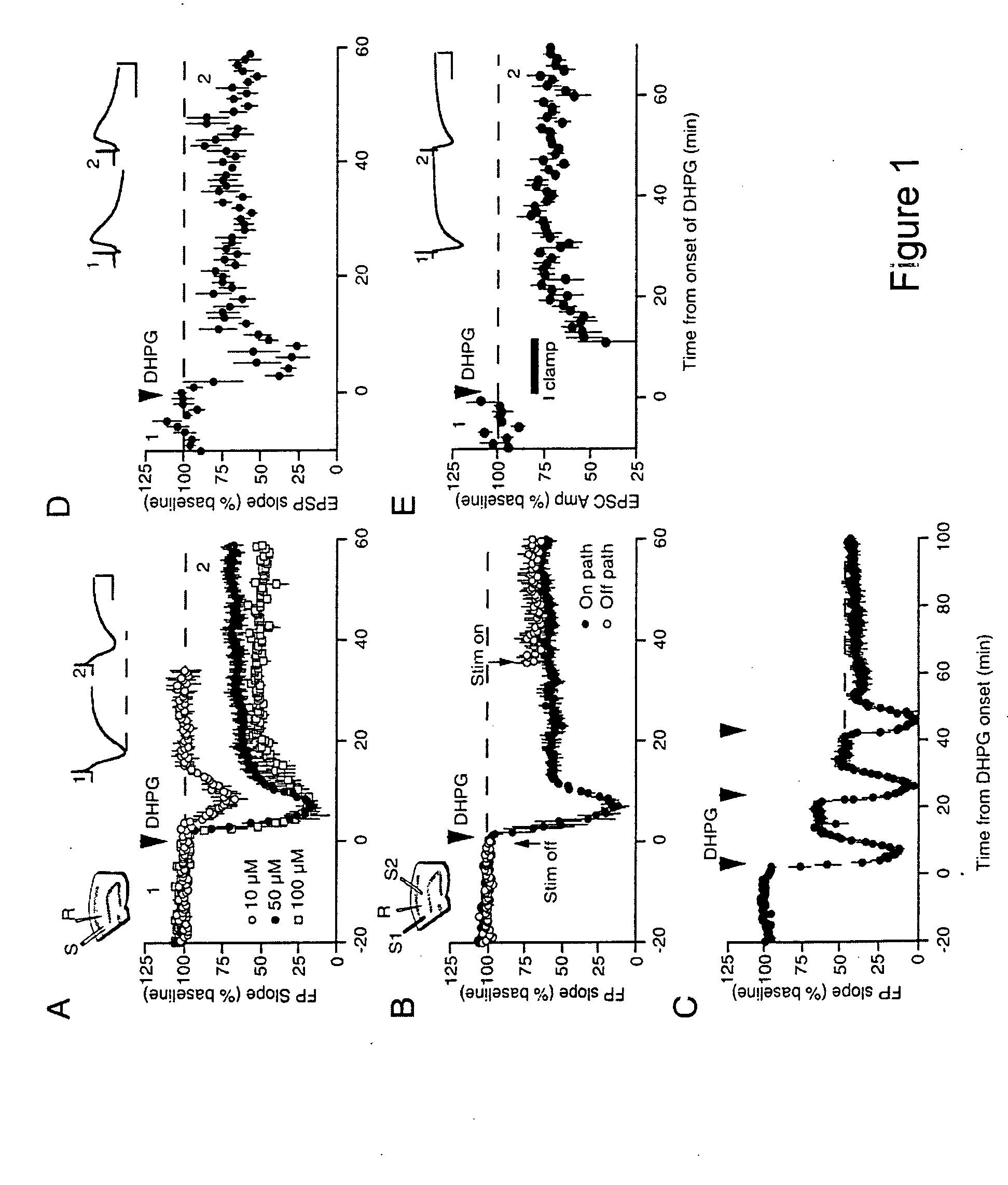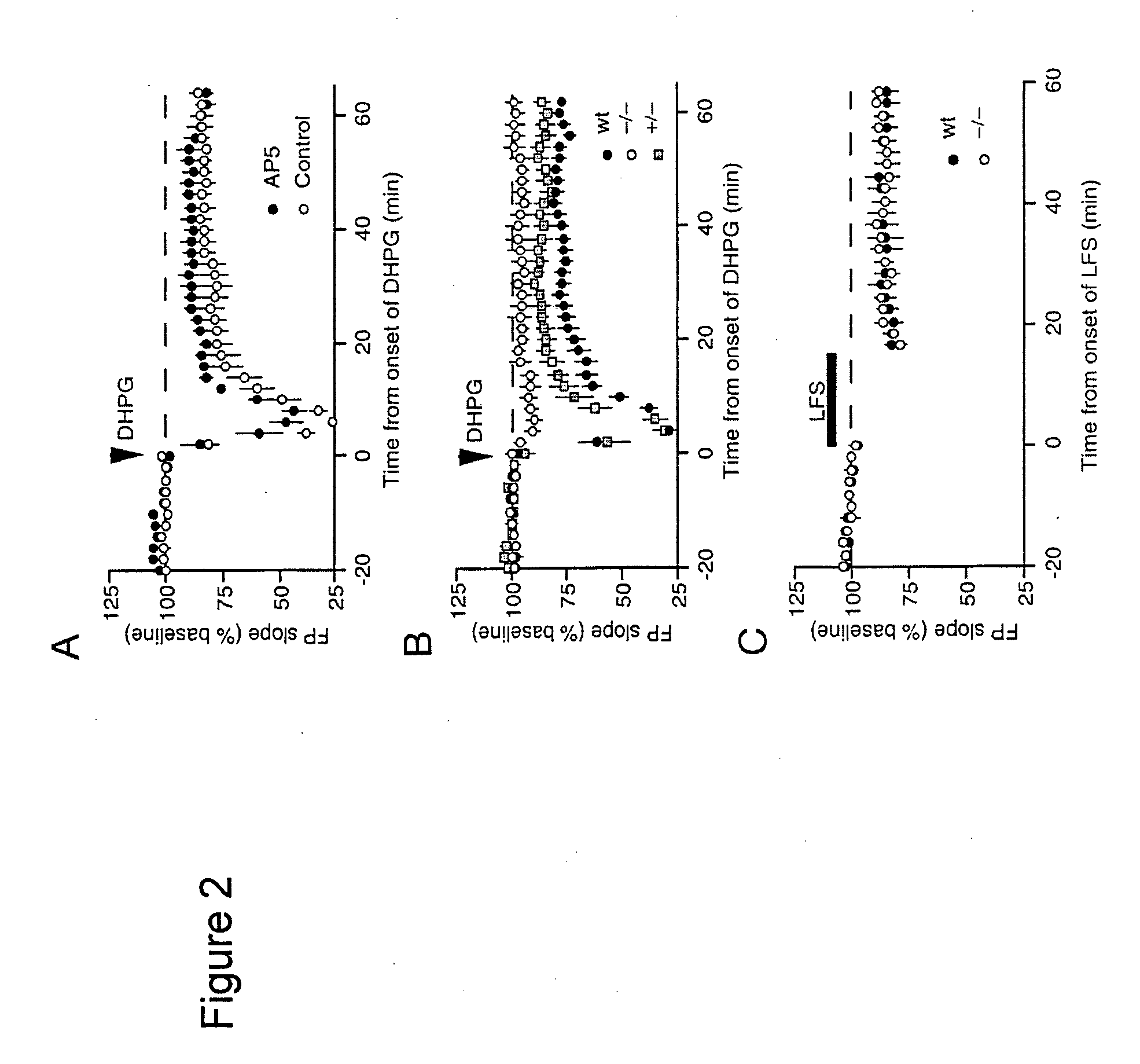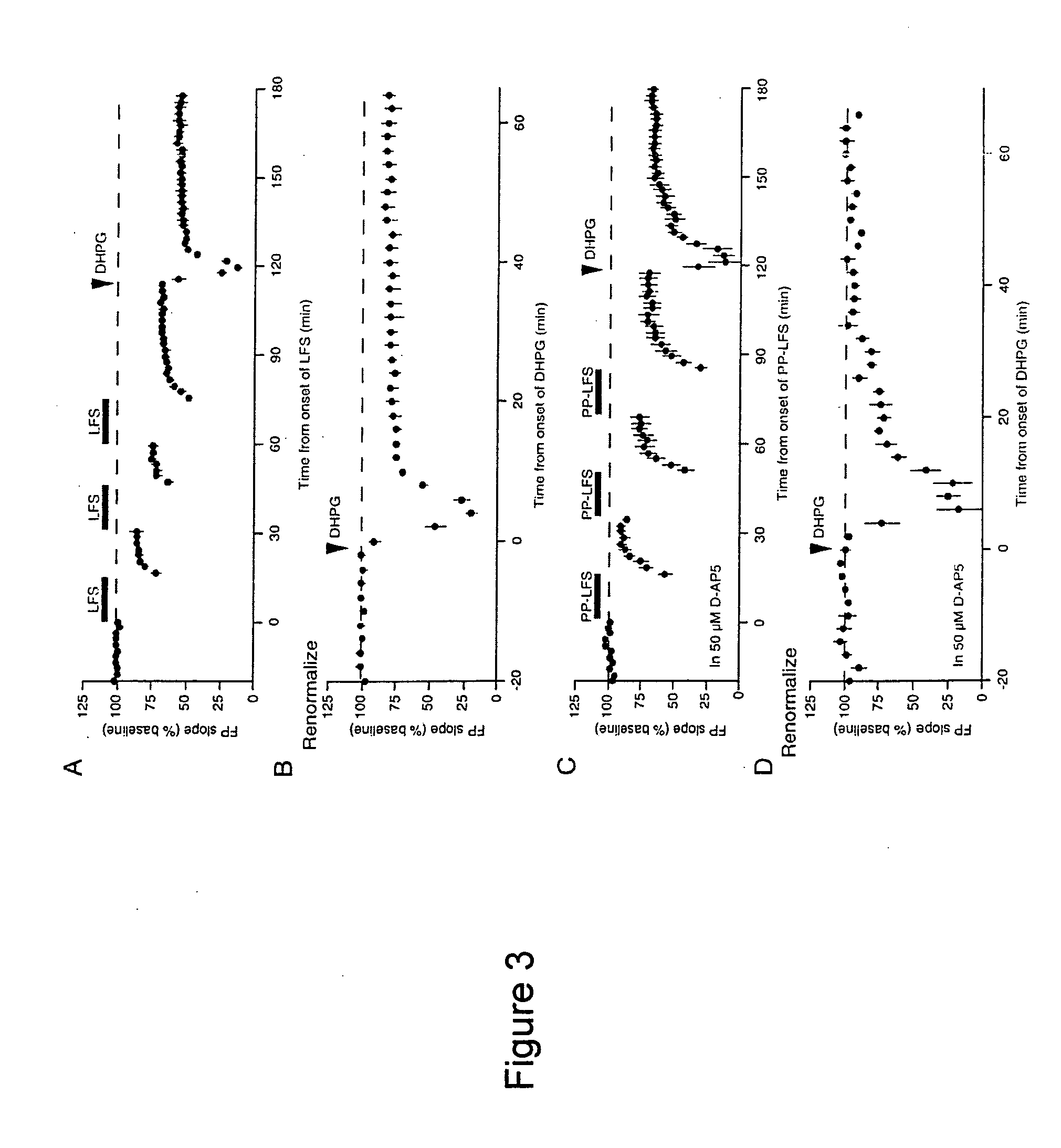Methods of treating disorders with group I mGluR antagonists
a technology of group i mglur and antagonists, which is applied in the direction of biocide, heterocyclic compound active ingredients, drug compositions, etc., can solve the problems of neuronal cell damage or loss, and achieve the effect of increasing the quality of li
- Summary
- Abstract
- Description
- Claims
- Application Information
AI Technical Summary
Benefits of technology
Problems solved by technology
Method used
Image
Examples
example 1
Chemical Induction of mGluR5- and Protein Synthesis-Dependent Long-Term Depression in Hippocampal Area CA1
[0344] Specific patterns of synaptic stimulation can induce long-term depression (LTD) in area CA1 of the hippocampus. The LTD depends on activation of metabotropic glutamate receptors (mGluRs) and rapid protein synthesis. As described herein this form of synaptic modification can be induced by brief application of the selective mGluR agonist (RS)-3,5-dihydroxyphenylglycine (DHPG). DHPG-LTD is a saturable form of synaptic plasticity, requires mGluR5, is mechanistically distinct from N-methyl-D-aspartate receptor (NMDAR)-dependent LTD, and shares a common expression mechanism with protein synthesis-dependent LTD evoked using synaptic stimulation. DHPG-LTD can be useful for biochemical analysis of mGluR5- and protein synthesis-dependent synaptic modification.
Introduction
[0345] Homosynaptic long-term depression (LTD) is a widely expressed form of synaptic plasticity in the brai...
example 2
Internalization of Ionotropic Glutamate Receptors in Response to mGluR Activation
[0376] Activation of Group I mGluR I metabotropic glutamate receptors (mGluRs) stimulates dendritic protein synthesis and long-term synaptic depression (LTD), but it remains unclear how these effects are related. Here we provide evidence that a consequence of mGluR activation in the hippocampus is the rapid loss of both AMPA and NMDA receptors from synapses. Like mGluR-LTD, the stable expression of this change requires protein synthesis. These data suggest that expression of mGluR-LTD is at least partly postsynaptic, and that a functional consequence of dendritic protein synthesis is the regulation of glutamate receptor trafficking.
Introduction
[0377] Two mechanistically distinct forms of homosynaptic long-term depression (LTD) coexist in the hippocampus. Induction of one form depends on activation of N-methyl-D-aspartate receptors (NMDARs) and postsynaptic protein phosphatases, and induction of the ...
example 3
Fragile X Mental Retardation
[0449] Fragile X syndrome is a prevalent form of inherited mental retardation, occurring with a frequency of 1 in 4000 males and 1 in 8000 females. The syndrome is also characterized by developmental delay, hyperactivity, attention deficit disorder, and autistic-like behaviors (Jin, P., et al., Hum Mol Genet, 9: 901-8, (2000)). There is no effective treatment for Fragile X syndrome.
[0450] The syndrome is typically caused by a repeat expansion mutation in the FMR1 (Fragile X Mental Retardation 1) gene that encodes FMRP (Fragile X Mental Retardation Protein). FMRP associates with translating polyribosomes and a subset of brain mRNAs, and functions as a regulator of protein synthesis (Feng, Y., et al., Mol Cell 1:109-18 (1997); Brown, V., et al., Cell 107:477-87 (2001); Darnell, J. C., et al., Cell 107: 489-99 (2001); Zhang, Y. Q., et al., Cell 107:591-603 (2001)). Polyribosomes, FMR1 mRNA, and FMRP are present in dendritic spines, the major site of synapt...
PUM
| Property | Measurement | Unit |
|---|---|---|
| voltage | aaaaa | aaaaa |
| evoked currents | aaaaa | aaaaa |
| concentration | aaaaa | aaaaa |
Abstract
Description
Claims
Application Information
 Login to View More
Login to View More - R&D
- Intellectual Property
- Life Sciences
- Materials
- Tech Scout
- Unparalleled Data Quality
- Higher Quality Content
- 60% Fewer Hallucinations
Browse by: Latest US Patents, China's latest patents, Technical Efficacy Thesaurus, Application Domain, Technology Topic, Popular Technical Reports.
© 2025 PatSnap. All rights reserved.Legal|Privacy policy|Modern Slavery Act Transparency Statement|Sitemap|About US| Contact US: help@patsnap.com



